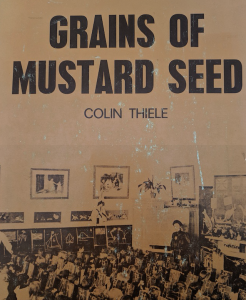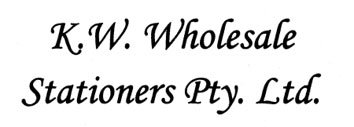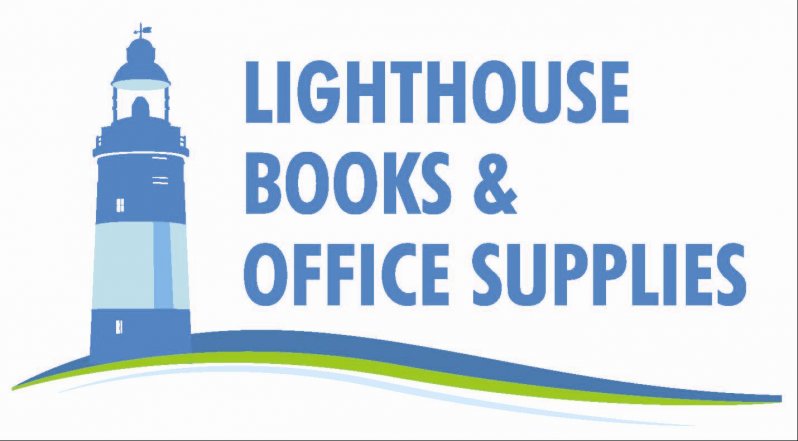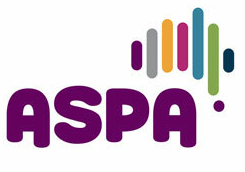
Educational Leadership: the missing perspective
29th August 2019
This essay argues that we need to pay far more attention to the history of school leadership in this State, particularly in the period from the early 1970s.
The claims I intend to make on the present challenges facing principals in State schools are hardly new. Nor will anyone be all that surprised by what I have to say on the current preoccupation with theories of educational leadership, and key concepts such as ‘autonomy’. However, readers will probably be struck by the fact that the essay is written by a retired principal. And they will definitely be more surprised by what I claim to be the missing perspective in the current preoccupation with educational or ‘instructional’ leadership. In my defence, I genuinely believe that now is the time for some serious historical analysis.
Some quick background will help. I have been retired for 10 years but I still have ongoing contact with State (secondary) principals. Dealing with them either individually, or in groups at conferences and workshops, I feel confident enough to record what I see as their thoughts on and attitudes towards the leadership of the school principal. Critically, I do not see any qualitative improvement in the lot of the principal over the 10 years since I retired. In fact, I intend to argue that despite a heightened awareness of and, certainly, considerably more research on theories of educational leadership, the role of principal today is even more challenging and compromised than it was 10 years ago. I also want to argue that in great part the paradox can be explained by the absence of any historical analysis of educational leadership in the State system of schooling in South Australia.
To begin, I want to sketch the type of concerns that principals in the State system often articulate. The list is not definitive, nor are the items in any way prioritised. Moreover, some concerns are expressed indirectly, even privately, while others are stated unreservedly and taken as obvious truth.
These are the type of observations I commonly pick up in conversation with principals:
▪ there is a perceived lack of educational – as opposed to managerial or bureaucratic – leadership at the ’system’ level where there are even people in positions without any direct or significant background in educational leadership.
▪ while the principal is routinely touted as the ‘instructional leader’, the reality is that they are forced to be more of a manager and administrator.
▪ the Department’s systems, processes and culture are perceived as inflexible and unresponsive. Often, the standards it prescribes and the quality it demands are not reflected in its own actions.
▪ leaders and schools are, in effect, encouraged – and in some instances, forced – to compete against each other to secure enrolments and uphold the school’s ‘status’. Often the competition is on the basis of problematic standardised testing.
▪ while the individual school has an informed and responsive understanding of the educational – and broader – needs of its particular community, the Department can pursue a different educational agenda, one that can compromise the school’s efforts.
▪ there is tension over how the staff – and the wider school community – view the principal. Is the principal seen merely as a ‘company representative’ pushing the latest system directive or as a highly visible education leader who is capable of identifying, articulating and accommodating the real educational needs of the community and keeping the Department ‘in hand’ or minimising its potential interference?
▪ in particular, there is concern expressed for the beginning principal, particularly in terms of how such people can be taught to handle the inherent pressures and, at the same time, helped to develop the skills and confidence to manage the demands of the Department. People argue that beginning principals need advice on how to establish the necessary ‘distance’ between themselves and the Department.
▪ importantly, there is the strong view that all the pressures and challenges of the principal’s role are amplified dramatically in disadvantaged schools.
▪ there is recognition of the critical role played by principal associations (SASPA and SAPPA) in supporting and defending principals. There is also strong support for principals working in self-initiated and common-interest teams. Yet the claim is also made that it is hard to imagine any other profession – medicine, engineering, law, academia etc – that would tolerate the same degree of interference, micro-management and direction as experienced by educational leaders.
▪ the ‘heroic leader’ – the one who does it all, whose door is always open, always goes beyond, is very ‘hands-on’, knows every student in the school, puts in incredible hours, has no life beyond school … – inevitably crashes and burns.
▪ there is also the view that principals need to be more active in understanding the ‘politics’ of education and more active politically, particularly as defenders of public education. There are high levels of frustration and anxiety for principals over the perceived, unrelenting assault on State education.
Of course, there are also many concerns over workload, the unrelenting pressure and general health. Certainly the issue of principal workload is very topical at present. See, for example, the June SASPA e-Bulletin for the national Autonomy, Accountability and Principal’s Work: An Australian Study. There is also SASPA’s local, ongoing work with the Department to ‘reduce the negative impact of workload intensification’.
On the issue of health, it is worth noting the most recent Principal Health & Wellbeing Survey: The Australian Principal Occupation Health, Safety and Wellbeing Survey 2018. The survey highlights stress, burn-out and a range of other symptoms. Since 2011 this particular survey has found that the 2 greatest sources of stress have been the ‘sheer quantity of work’ and the ‘lack of time to focus on teaching and learning’, or what is commonly referred to as ’instructional leadership’. This latter concern needs to be set against finding that ‘most principals describe themselves as passionate educators.’
The 2018 iteration of the survey also highlights the extent of ‘offensive behaviour’ directed at the principal and noted that 45% of participants had experienced threats of violence. Importantly, these concerns over safety are hardly new. For example, see the following articles from The Conversation:
Bullies, threats and violence: who would want to be a school principal? July 2013
Why is being a school principal one of the most dangerous jobs in the country? December 2015
The very practical issue of violence directed at the principal opens up another completely different set of challenges, ones that relate to a more fractured, divided and angry society at large rather than the behaviour or culture of the Department. At the same time, there is the valid concern that the Department – or more correctly Government, both State and National – presumes too easily that the State school and its principal can ‘manage’ a veritable tsunami of challenges whose origins lie outside the State school.
Yet even this extended scope does not adequately address the full range of the challenges facing the principal. There is also, for example, the very significant ongoing potential for industrial strife, with all the attendant internal staff division and conflict, as well as the inevitable community angst. The ‘work-to-rule’ tactic favoured by the AEU is particularly disruptive to school life. It inevitably transfers the focus of the industrial dispute away from the intransigence of the Department and Government to the orchestrated suspicion of – if not direct antagonism against – the principal.
However, this is not the occasion to write the definitive essay on the challenges facing the principal in the State system. Equally, it is important to stress that most principals are sanguine about the role and its significant challenges. They understand that no matter the workload, frustrations and pressures the position of principal is a powerful and privileged one. The role and status of principal are not to be taken on lightly nor dismissed carelessly. They know that it is a vitally important position in contemporary society and should only attract the best.
Instead, I want to bring the focus back to my original point: these are the observations of a retired principal, one who has been retired for 10 years. My concern is that over the past 10 years nothing seems to have changed. All these points and arguments were being made 10 years ago, and even well before that. For example, here is a quote from the Curriculum and Leadership Journal of 2007 (Vol 5 Issue 9, 30 March 2007):
The demands placed on school leaders are complex, multi-dimensional and sometimes contradictory. School leaders face competing expectations in their roles as managers, marketers and educational leaders. These competing expectations and growing accountabilities have had an impact on the workload and professional satisfaction of school leaders and are seen to have made it increasingly hard to recruit quality leaders.
Over at least the past 20 years an enormous amount of writing has been published on school leadership and some authors have grown very wealthy on the topic. It has kept many academics in constant research, and publication. Thus we have have had instructional leadership, distributed leadership, transformative/ethical leadership, transactional leadership, collaborative leadership, effective leadership, interpersonal/emotional leadership, holistic leadership, democratic leadership, authentic leadership, contingent leadership and covenantal – as opposed to narcissistic – leadership. There is even ‘grassroots’ leadership. The leader as ‘change agent’ has been another focus. The prolific terminology is virtually a discipline in itself. Of course, the study of leadership goes well beyond education and it has been a constant topic of research in the corporate world, the bureaucracy, the armed services and numerous academic disciplines, from social anthropology to political science. Leadership is the concern of our times.
Specifically in terms of education, beyond the abundance of theories on leadership, education systems have also invested heavily in training programs and academic courses. There is a plethora of such programs for aspiring and practising education leaders and in many jurisdictions the programs are mandatory. We claim to know what makes a successful and effective principal. We have set up standards in relation to educational leadership – Australian Institute for Teaching and School Leadership – and we describe the responsibilities of the position of principal and other leadership positions in terms of such standards. We select and assess principals against the same standards.
In fact, school leadership and the position of principal are arguably amongst the most researched topics in educational theory and all systems have invested heavily in the pursuit of such leadership: to articulate the theory, establish the standards, provide relevant training … . It is also universally accepted that the quality of school leadership is critical to the overall success of the school.
Yet for all the attention and efforts in this specific area of educational leadership, it is still the case that school principals are over-worked, under great pressure and frustrated by the limits imposed on their role. Principals are often in conflict with what they see as the centralised and impersonal authority of the Department and feel that their professional status is not acknowledged and sometimes even undermined. They are frustrated by a constantly changing educational agenda: one over which they have little control and one which they see as driven more by politics than the educational interests of their students. They are also conflicted by the need to set themselves in competition with other schools. And there is the constant need to fight and bargain to gain essential resources for their own individual school. The list of pressure points can be extended and important qualifications made but the fundamental truth remains: notwithstanding the extraordinary amount of research, attention and resources that have been invested in school leadership over the recent past, the position of principal still remains an extraordinarily difficult role, even to the extent that fewer teachers aspire to the position, on the grounds that they can see the pressures and perceive the job as, essentially, ‘undoable’. While this state of affairs obviously affects the overall health and well-being of those in the position, the more telling point is that it also compromises the quality of educational outcomes for students.
One response to this paradoxical situation could be to double down on the quest for the ultimate theory of educational leadership, in the belief that once the holy grail of school leadership is uncovered – even if to this point, despite the enormous effort, it has proved elusive – it can be formulated and taught to leaders and all will be well. However, I want to suggest another approach. My approach is to concentrate on the actual history of educational leadership and I am specifically focusing on the context of the South Australian State system over the past 50 years.
Leadership, in this instance educational leadership, always occurs within a real social and political context. Nor is it ever ahistorical. Leadership itself – the application or practice of the theory – is always set within real world realities shaped by economic, social, cultural. demographic, political, industrial … factors. We need to recognise and understand these contributing factors and the particular history. No insight, understanding, ideal, theory, practice or any other variation of mental reality – not even language itself – is ahistorical. Immediate context and historical background are inseparable and essential.
Admittedly, in a more globalised and immediate world ideas and theories can be shared more easily. It is relatively easy to take, for example, the latest theory on educational leadership from one jurisdiction and apply it to a specific local situation. Indeed, the technology encourages us to do this. It seems perfectly natural. But this approach encourages us to discount, disregard or even deny the local context and search for, as it were ‘pure’ social theory which lies outside both time and place. In part, this search for models of educational leadership from other jurisdictions comes because here in SA there is no formal, critical record of the history of educational leadership in the State system. In fact, there is precious little history of schooling at all. For us there is no past and so we feel free to start from scratch. Yet the (unrecorded) history of educational leadership in SA is incredibly rich and complex.
Perhaps I can demonstrate this argument in a more concrete manner. For the 100 year celebration of state education in SA (1975) Ron Gibbs and Colin Thiele were commissioned to write a history … to commemorate the centenary of the Education Department. Their brief was to produce … a book for the general reader rather than a scholarly thesis or an attempt at a definitive history. The resultant work was entitled Grains of Mustard Seed which was published by the Education Department.

Thiele, C 1975, Grains of Mustard Seed,The Griffen Press, Netley SA.
While the work is essentially a narrative history of the first 100 years, it does offer profound insights on the Education Department and the history of state schooling to 1975. It is a very important work and should be on the bookshelf of every State school principal. It is definitely an account – and analysis – which places issues such as educational leadership within an historical context specific to this State. As an example, consider this extract touching on the famous ‘Freedom and Authority Document’ (Memorandum) of 1970. It details the highly significant partnership between the Minister (H R Hudson) and the then Director-General (A W Jones). It was a period of momentous change and the issue of educational leadership in the schools was, at the time, seen as a key driver for such change.
Bearing in mind the mood of the times and the needs of the schools the Hudson-Jones condominium was extremely productive. For far from being autocratic the administration now became much less prescriptive. “We have continued to encourage innovation, flexibility and open discussion”, Hudson wrote in his first report after only seven months in office, and events already bore this out. He and Jones had inherited a structure that was rigid and status-conscious, when the need was for sensitive support rather than prescription and demand – “a central administration that was willing and able to act as a catalyst in situations where previously it had issued instructions”.
The need therefore was to involve the schools much more extensively in the decision-making processes, and to delegate responsibility much more widely. The most important single move in this direction in the history of the Education Department was taken in August, 1970, when Jones issued an historic memorandum that came to be known as the Freedom and Authority Document. It stated categorically that the Head of the School was in “undisputed control”, and indicated the freedom of action which he or she and the staff might exercise. Even earlier – in March, 1970 – within days of his appointment as Director-General, Jones had announced that there was now no restriction on teachers making public statements on education, or seeking to promote their ideas for improvement or innovation.
This profound change of attitude had enormous implications for the schools. The process of delegation and staff co-operation now became vital within the school structure. The Department was to cease being Big Daddy (sic). The old image of “They” as faceless ogres was to be dispelled. While the central administration still existed to provide overall co-ordination and supply, it was no longer to be a shelter to hide behind.
As the schools began to operate under the new policy there was obviously hesitation, even confusion. Some teachers felt that they could not exercise their freedoms because of other constraints in the system. Nevertheless the loosening of the bonds continued apace. Greater independence in curricula, greater flexibility in timetabling, internal budgetary control and a points system enabling schools to determine their own priorities for ancillary staff, quickly became realities. While insisting that the fact of delegation did not absolve schools from being accountable for what they did, the Minister was able to look back four years later and say:
[“] If the Freedom and Authority Document means anything it means that a Head has not only got the right to take decisions but the right to take what we might regard as mistaken decisions. [“]It was a far cry from the days of Hartley [first Director-General 1875-1896]. Schools had moved further and faster towards professional freedom and responsibility during the past five years than they had in the previous ninety-five. [pp 226-227]
No doubt some current principals will be struck by the claim that the principal was in ‘undisputed control’ of the school. Others might be astounded to learn that at the time – the early 1970s when the Department was going through a period of unprecedented change – the push for principal independence and autonomy actually came from the Minister and Head of the Department. However, for my immediate purpose the extract demonstrates how educational leadership must always be seen in a real world context. The Freedom and Authority Memorandum can only be understood in the context of its time and place.
Interestingly, the above account suggests a degree of reluctance to take up the offer of increased autonomy. There is some important related history. Twenty years ago now – and 30 years after the Freedom and Authority Memorandum – Partnerships 21 also promised a far higher degree of local school management where increased principal autonomy was seen essential. Yet many principals chose not to support the initiative. Some embraced the AEU narrative that P21 was a form of privatisation. Others judged that the policy was an attempt to shift an ever greater load of management responsibility from the Department to the individual school without adequate resources. Opponents saw the promise of increased autonomy as a chimera. On the other hand a significant number of principals welcomed the opportunities presented by P21, appreciated the increased autonomy and embraced it enthusiastically. However, in the end, the Government effectively walked away from the program. Even though we do not yet have any detailed, historical analysis of this critical episode in the State’s educational history the same essential lesson is apparent: leadership is always filtered through – or compromised by – real social and political contexts. No theory of leadership is ever ‘pure’. Increased leadership autonomy will only ever remain an ideal if it is not understood within its historical context.
Consider another issue with a relevant history. To the end of the 1970s the (SA) Education Department ran a very sizeable and significant Curriculum Directorate. Historically, the curriculum taught in State schools was the direct responsibility of the Director General. [1972 Education Act, 82. (1)]. The Education Department in SA was a national leader in curriculum development and innovation.
However, over the last 50 years the idea of what should constitute a school curriculum has undergone profound change. This has been driven in large part by the need to provide a full 12 years of schooling for all. As part of this process, the Education Department has seen its direct responsibility for the ‘instruction provided in Government schools’ severely curtailed. The senior secondary component, for example, has been assigned to separate curriculum and assessment authorities (the initial SSABSA and current SACE Board) and various state and national training authorities and providers. At lower levels of schooling the Australian Curriculum has taken over. The issue here is not to do with the inevitability, desirability or effectiveness of such change but, rather, the effect that such change had on the nature of educational leadership within the Department.
As the Curriculum Directorate faded away there was, inevitably, a very significant loss of curriculum expertise and authority within the Department. At the same time, there was an effective reshaping of the internal politics within the Department itself. Without an effective ‘curriculum block’, power shifted to the more purely bureaucratic centres responsible for concerns such as staffing and human resources or the management of finance, infrastructure and physical assets. Again, this was arguably inevitable. However, it is possible to shape an historical argument that the loss of the Department’s primary role in curriculum changed the nature of educational leadership in both the Department itself and its schools. Operating within a perspective that saw curriculum as a commodity that was ‘contracted-out’ and without the historically very powerful ’curriculum voice’ within its own centre, the Department drifted into models of school leadership that appeared more bureaucratic, universal and ’managerial’. The current irony is that at the time that ‘instructional leadership’ has become the current mantra, the Department has a very limited curriculum presence and most of this is only ‘generic’ in nature. The basic point is that anyone who wants to understand the real perspective on ‘educational’ or ‘instructional’ leadership – and not just in our schools but in the Department itself – needs to understand the history of how the Department lost – surrendered – its curriculum mandate and focus, and the impact of these changes as they flowed out across the whole system. A simple focus on ‘Instructional Leadership’ is hardly going to reverse this profound shift.
At roughly the same time as the Department began withdrawing from the Curriculum – as one of the traditional pillars of its raison d’etre – it also completed the hand over of its teacher training function to tertiary institutions: Adelaide and Flinders universities and Colleges of Advanced Education. At the time, the move was seen positively, but, in the longer term, it effectively further compromised the Department’s ability to define the ideal of ‘educational leadership’. Arguably, the move also weakened the Department’s overall curriculum influence and credentials. The arrangement also meant that if the Department was now one step removed from the preparation of its teachers, the principals – the instructional leaders – were at least two steps removed.
You can approach this history of educational leadership within the Department in many ways. One simple one would be to trace the significant shifts in nomenclature for the key intermediary role between the Department and the school principal. Effectively it is the position of ‘line manager’ or ‘liaison’ between the local site and the central office. Initially, round the time of the Freedom and Authority Memorandum, the historically charged term of Inspector was changed to Principal Education Officer (PEO). The stated intention was to ’soften’ the image of the role. The so-called PEO was to represent a pre-eminent educator who was there to support a colleague educator. It was a promotion of ‘collegiality’ as much as an attempt to distance the new Department from its more ‘command and control’ past. However, the latter 2 iterations – Superintendent and then Director – reflected less obvious agenda. The critical observation is that all such variations in the nomenclature and job description come from the Centre. It is the Centre that has the power to redefine or re-align its relationship with the educational leader. In this critical job-description, the principal is only ever in a responsive role.
And in terms of power relationships, no history of educational leadership in state schools in SA will ever be complete without a detailed analysis of the role of the AEU (South Australian Institute of Teachers). There are many issues but one critical one concerns the place of principals in what is essentially a ‘teachers’ union. Clearly, there is scope for significant conflict and, adding to the mix, is the fact that, traditionally, principals in SA schools have been actively involved in the local union and, in fact, have held the most senior positions in the organisation. There is also a strong history of principals not just taking but leading industrial action, particularly to win improved conditions for teachers. This was particularly the case with the South Australian Institute of Teachers.
The value of closely analysing the history of the relationship between the principal and the AEU in SA is that it throws into sharp focus the key issue of who can best protect the rights and interests of principals. For present purposes, we can define such rights and interests very generally as including, for example, the right to strike and take other forms of protected collective action, the ability to exercise significant autonomy in the running of the school – in areas of staffing and staff discipline, financial and resource management, curriculum provision and priorities etc – the promotion and protection of the principal’s personal and professional interests: remuneration, work conditions, tenure, professional training, professional insurance, health and protection…
Of critical importance is that fact that this complex set of rights and interests has, historically, been served not by a single entity but by a complex set of agencies, one of which has been the AEU. Generally, the AEU is a union of teachers. Some of these teachers, over time, rise to leadership positions in schools and a smaller number to the position of principal. As principals in the union there are some limited resources made available to them but the AEU is certainly not a dedicated principals’ union. In fact, when the interests of the principal or leadership team clash with those of the local sub-branch matters can become both very divisive and instructive. A particularly hard-line’ position is that principals are entitled to their AEU membership on the basis that, fundamentally, they are also teachers, or they first joined the union as teachers. Some even believe that where the principal is a member of the union they should take advice or ‘direction’ from the local sub-branch, because they too are a member – equal member – of the local sub-branch. In this sense, the principalship is more a form of ‘work site’ leadership. Obviously it is a fraught situation and it is also worth noting that the whole issue of school-based limits to the power of the principal was informed by the ideals of community schooling, policies of ‘democratic decision-making’ and notions of ‘industrial democracy’ dating from the 1980s and 1990s. Equally, the shift from promotion lists to limited tenure and merit-based selection also helped re-shape notions of leadership.
One specific episode in the history of school-based AEU action that warrants very close attention and analysis is that of Craigmore (2003). This case was even more interesting because at the time it was the Department – and the Rann (ALP) Government – that stood behind the leadership and role of the principal. The fact that this event played out in the immediate aftermath of P21 is also significant.
There is also the history of SASPA and other such ‘professional’ principals’ associations. Typically, such associations have a history of seeking to influence the policy and practice of both the Department and Government through informed debate, and the provision of expert advice, backed up by detailed research. They cultivate respectful relations with those they seek to influence and appeal to common educational interests. They strive to set the education debate. They are also very conscious of their public profile and feel that this profile significantly influences the community’s perception of State education. However, there are legitimate questions over the extent to which, because of their ‘professional’ culture, such associations can exercise political power. The argument is that in the final analysis the Department (and Government of the day) can ignore their advice or position with little political cost. Some argue for a principals’ professional association that has the power of a dedicated, mainstream industrial union where power is exercised in a far more direct – and often disruptive – style. However, politically that might not be achievable. In any case, the more telling point is that, historically, such a body has not developed.
Further, it is not the case that principals themselves are united. Not all belong to their own dedicated professional associations and certainly not all are AEU members. In fact, many principals see the role of principal as one of independence and self-reliance. They are ‘self-made’. Here they can draw on past histories of the ‘great principal’. They see themselves as unique and individual school leaders and they judge their success by the extent to which they can represent their own school’s interests. This is hardly surprising given all the inherent competition associated with both contemporary State schooling and leadership theory. Often, such ‘great principals’ fail to recognise that their vaunted autonomy is critically dependent on the context of their school. Certainly, they need to be honest enough to entertain the possibility that in another school, particularly a ‘challenging’ one – the type of school that can burn principals very quickly and has a high turn-over rate – their success could be far more qualified.
It is important to note that there can be external ‘shocks’ to the system that immediately override any other consideration and significantly tighten up or even reshape relations between the Department and the schools. The political reality of ministerial responsibility makes this inevitable. One obvious example from the recent past is the fundamentally important issue of child protection. See the Independent Education Inquiry 2012-2014. At the same time, as confronting as it can be, the history of how such cases are handled by leaders at both the school and Department levels is vitally important. The history of leadership under severe pressure with serious consequences is more powerful than pure leadership theory.
The intention here is merely to sketch out potential parameters for any historical study of educational leadership in the State system over the past 50 or so years. Others will have different approaches and emphases. Moreover, the history cannot be confined to just educational leadership. Rather, the history of leadership needs to be set within the broader history of State schooling. For example, the history of the dramatic increase over the recent past in the number of female principals in the State system – and the implications – cannot be isolated from the history of the education of girls in State schools over the same period. Equally, the contested history of how the politics of ‘privatisation’, ‘markets’ and ‘competition’ has shaped key leadership characteristics of ‘autonomy’, ‘accountability’ and ‘performance’ cannot be separated from the broader history of how the same politics has effectively re-shaped the function and nature of State schooling. A related issue has been the tendency of Government, of all persuasions, to look to the private sector as some sort of preferred or even ‘natural’ model for the State system. The private sector is lauded as more efficient, capable of better outcomes, more closely tied to its constituents, and, most importantly, one where the autonomy of the principal is touted as more genuine. Obviously, the private school is more closely aligned with the ‘market-driven’ ethos of the times. However, historically the comparison is a false one. State schooling was not established as an exercise in market-place economics; and the application of such thinking over the past 30 or so years has had a very damaging impact on State schooling. Historically, the ‘market’ is never free, neutral or fair. The only winner will ever be the Private sector – or sections of the State system that have been given the status of ‘independent’ – precisely because it can manage – even thrive in – the market and select and fashion its clientele.
School leadership, educational leadership, instructional leadership – whatever term is employed, it is abundantly clear that the quality of leadership in the school is critical to the overall success of the school. Beyond the individual school, the collective voice of principals is absolutely critical to the ongoing strength of the State system. Collectively, principals also have a right – and responsibility – to protect their own interests, power and status; and to the extent that they are not able to do this, the overall worth and quality of State education is compromised. At the same time, leadership is not some ‘pure’ or esoteric theory revealed from on high. Rather, it is hammered out – with its final form often compromised – in real social and political contexts; and there is always a history. Unfortunately, for the past 50 years we have both lost sight of and ignored that history. Worse, we have actually lost sight of the entire history of State schooling over the same period. Without an understanding of the historical background, the value of theory and practice, in this instance in relation to educational leadership in the State system, will always be compromised.


















